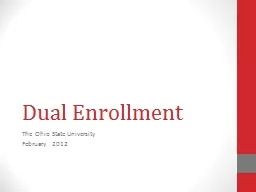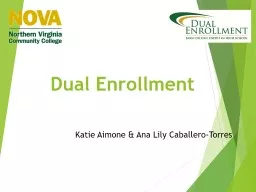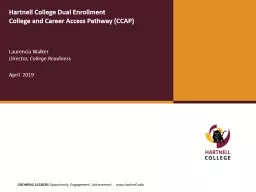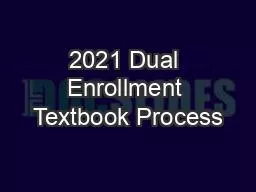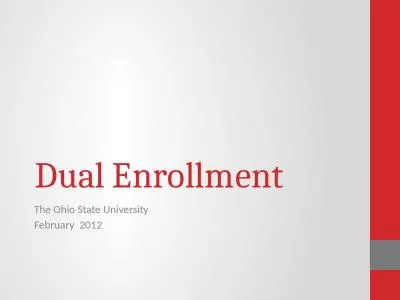PPT-Dual Enrollment
Author : tatyana-admore | Published Date : 2015-10-05
The Ohio State University February 2012 Dual Enrollment Committee Michele Brown UAFYE and OSU Academy Roger Nimps Regional Campus Liaison Sandy Stroot EHE Kay Wolf
Presentation Embed Code
Download Presentation
Download Presentation The PPT/PDF document "Dual Enrollment" is the property of its rightful owner. Permission is granted to download and print the materials on this website for personal, non-commercial use only, and to display it on your personal computer provided you do not modify the materials and that you retain all copyright notices contained in the materials. By downloading content from our website, you accept the terms of this agreement.
Dual Enrollment: Transcript
Download Rules Of Document
"Dual Enrollment"The content belongs to its owner. You may download and print it for personal use, without modification, and keep all copyright notices. By downloading, you agree to these terms.
Related Documents

